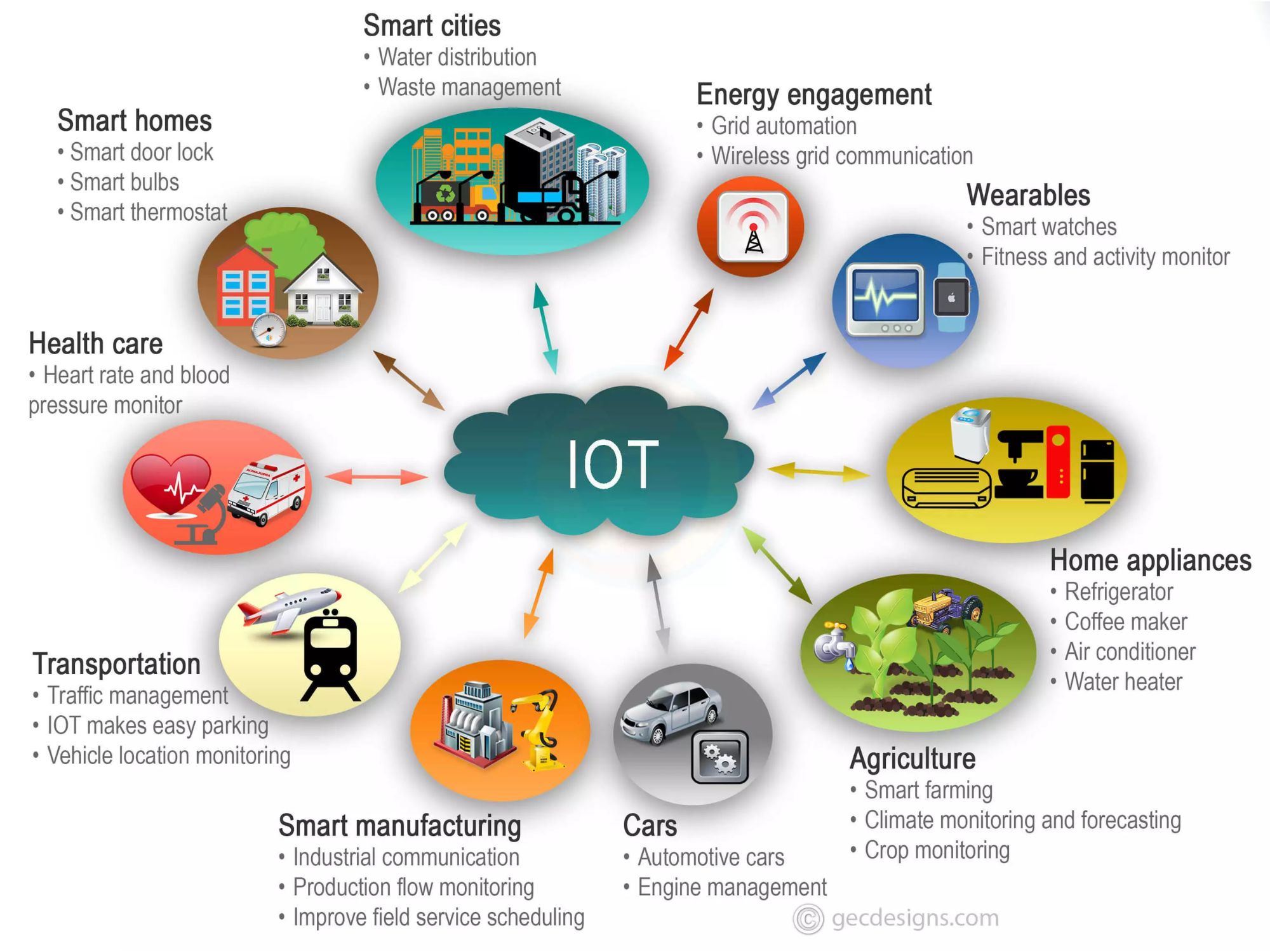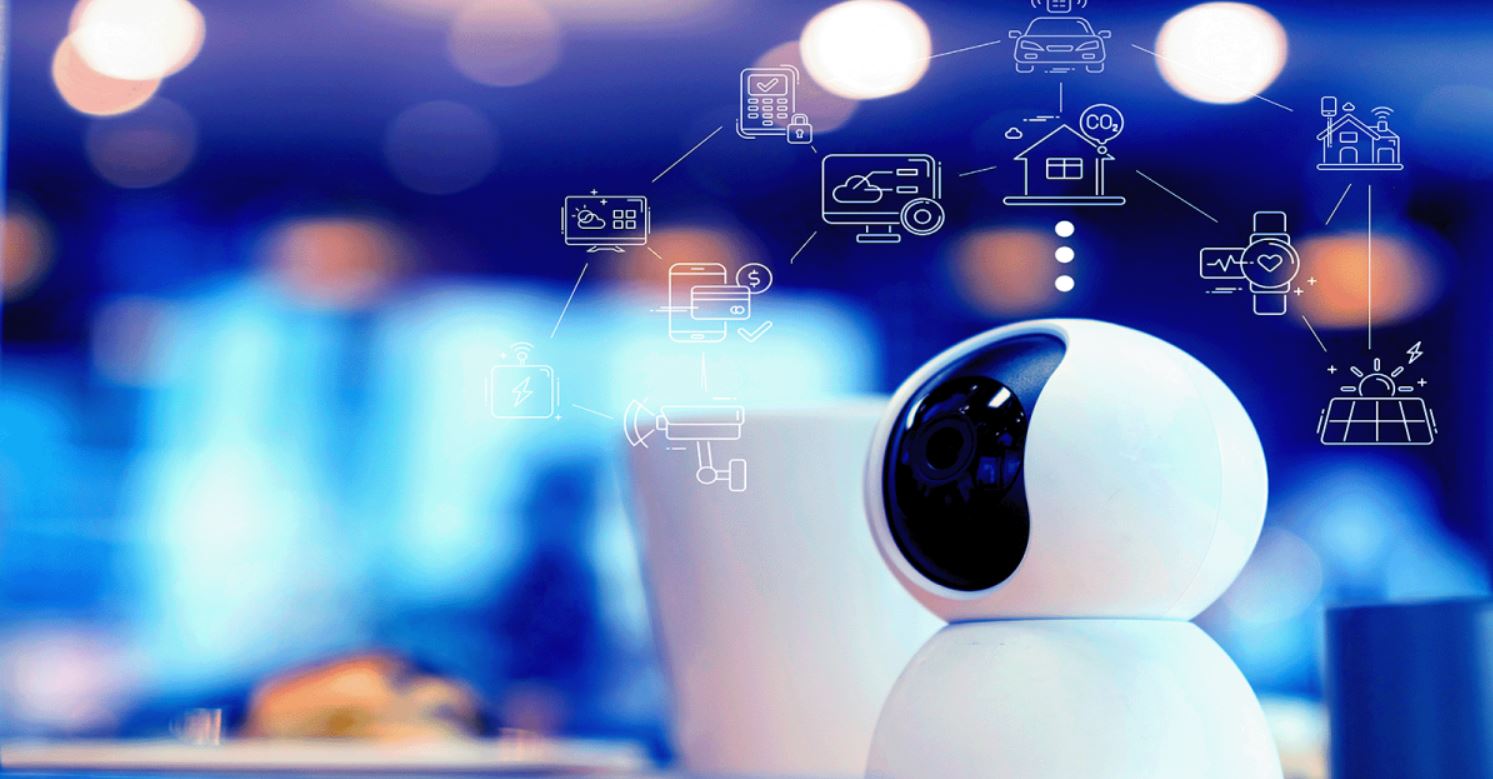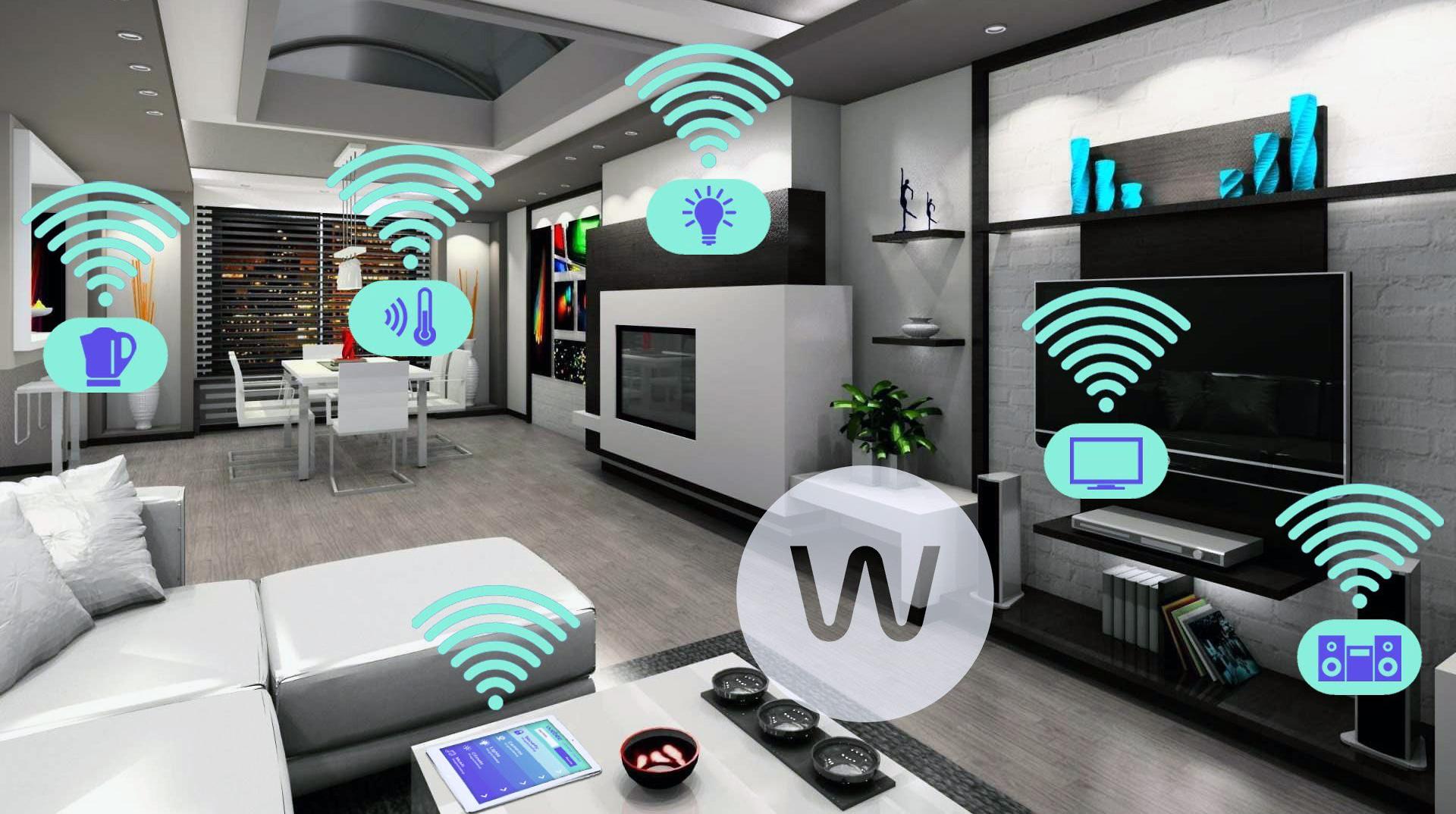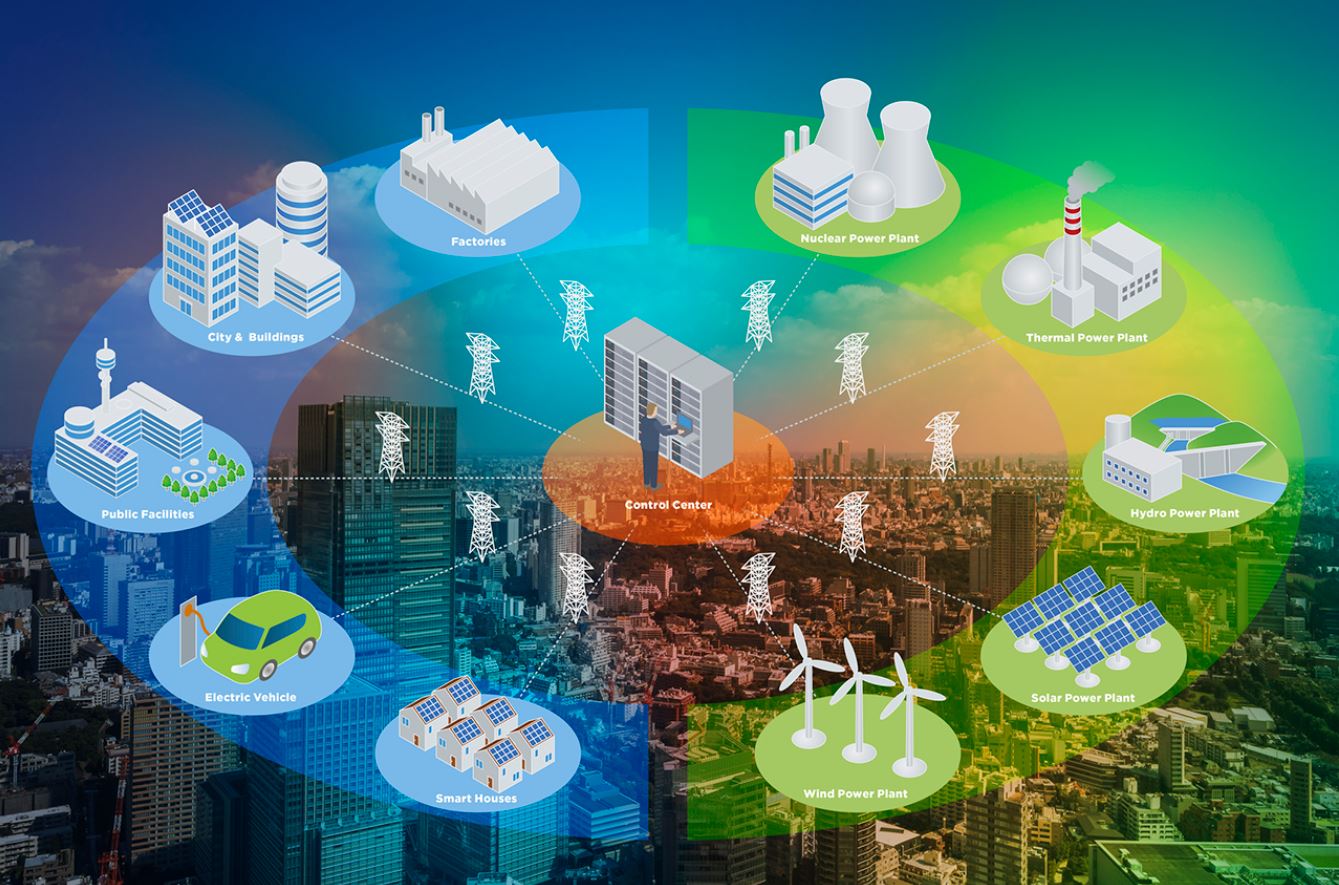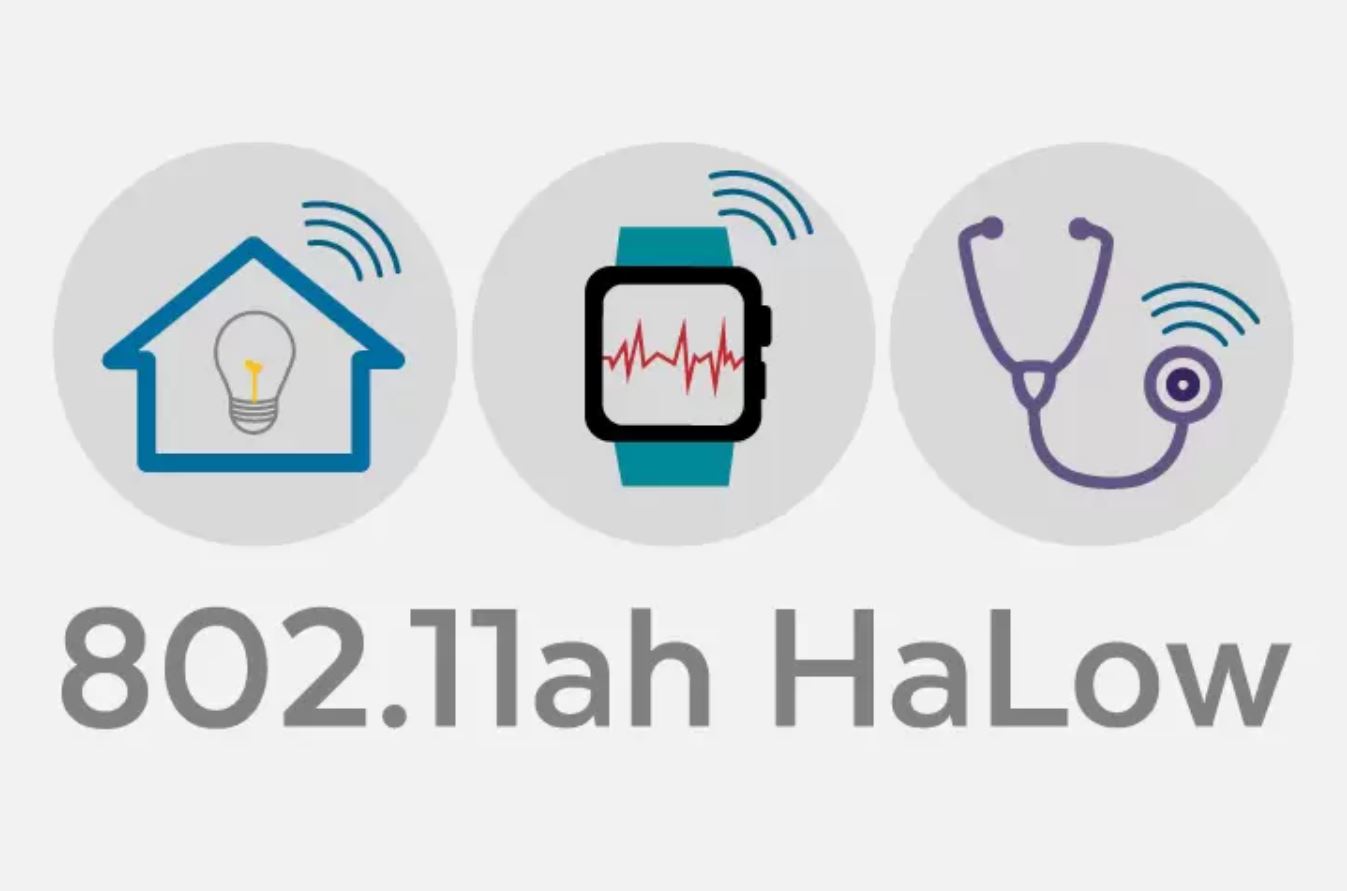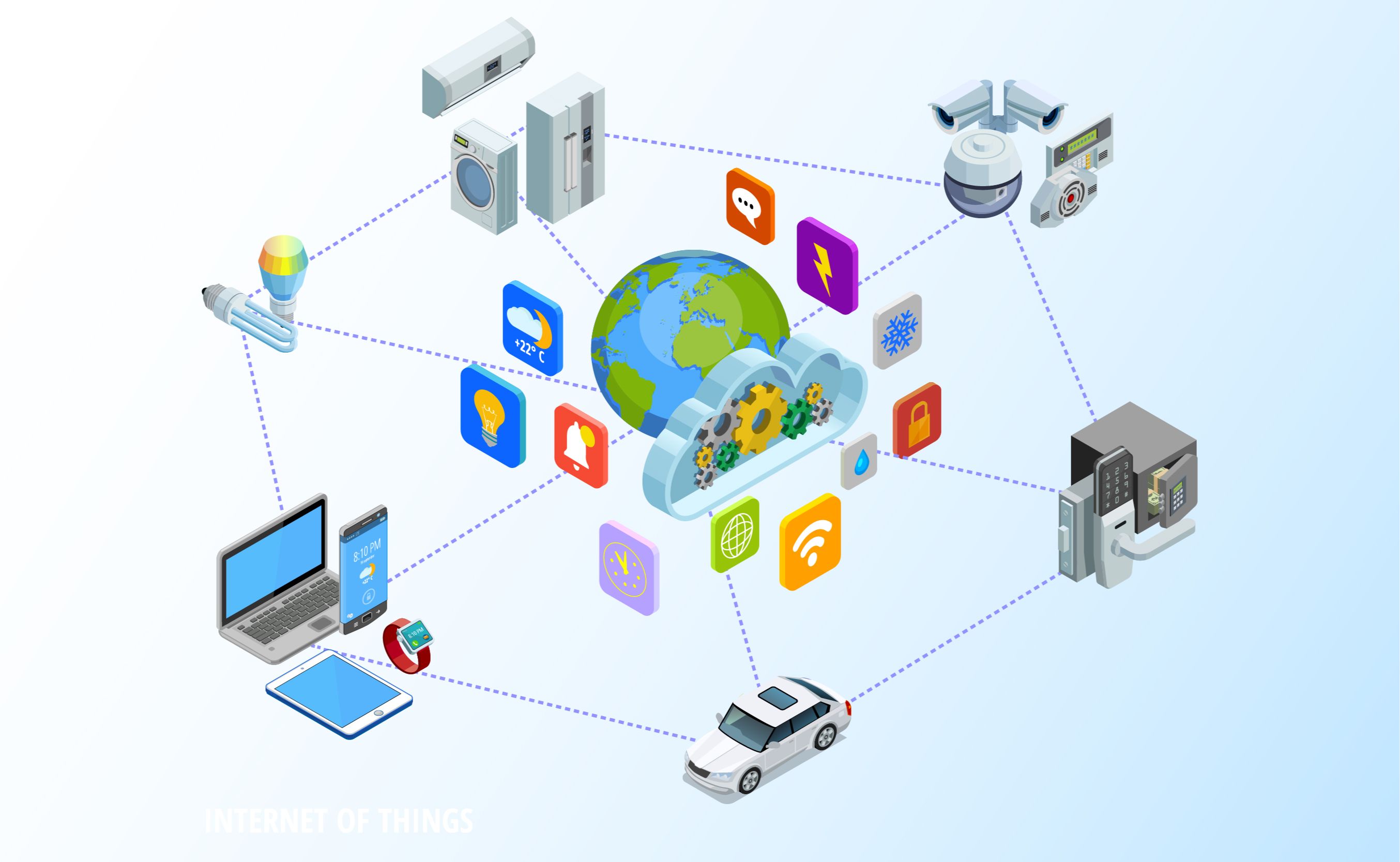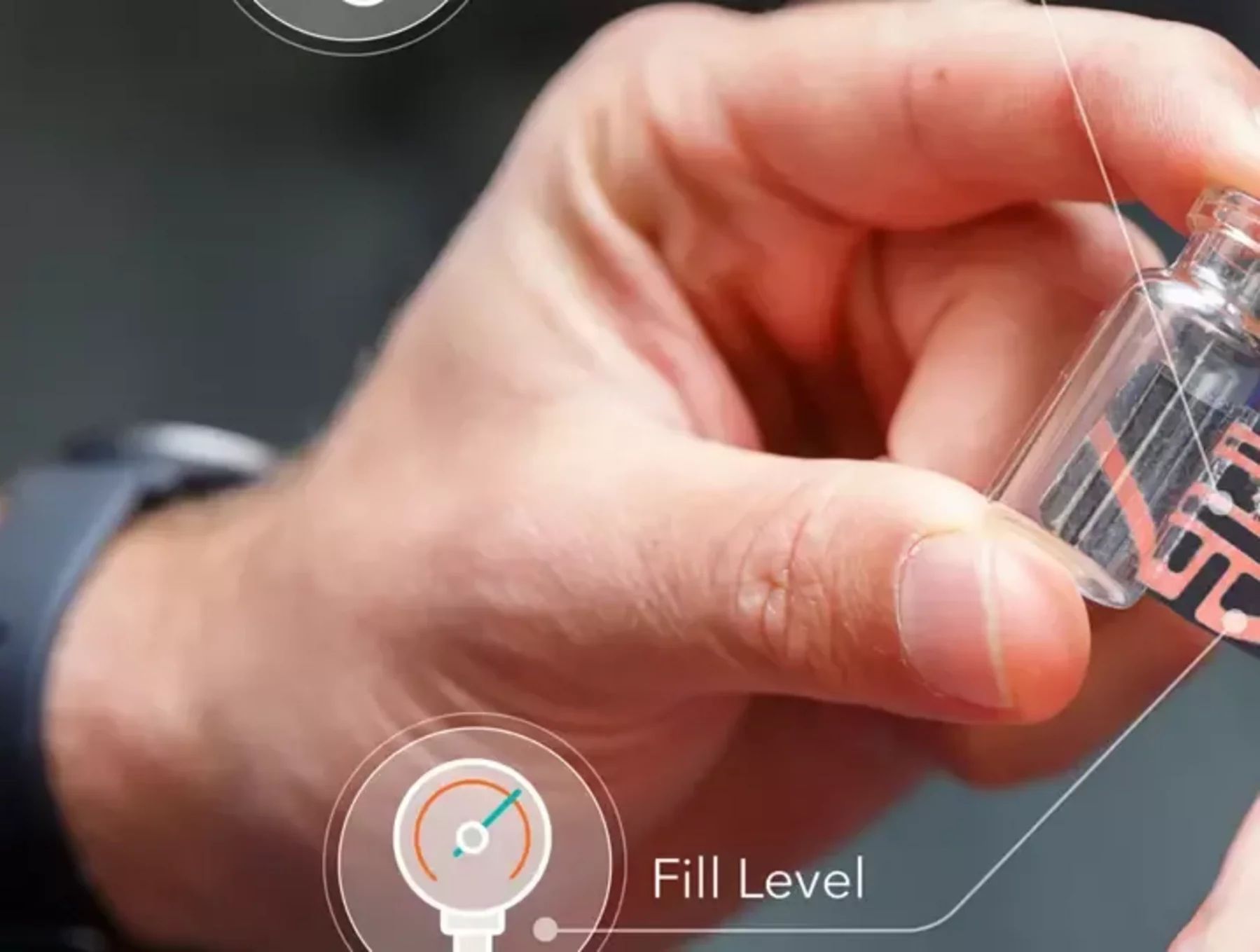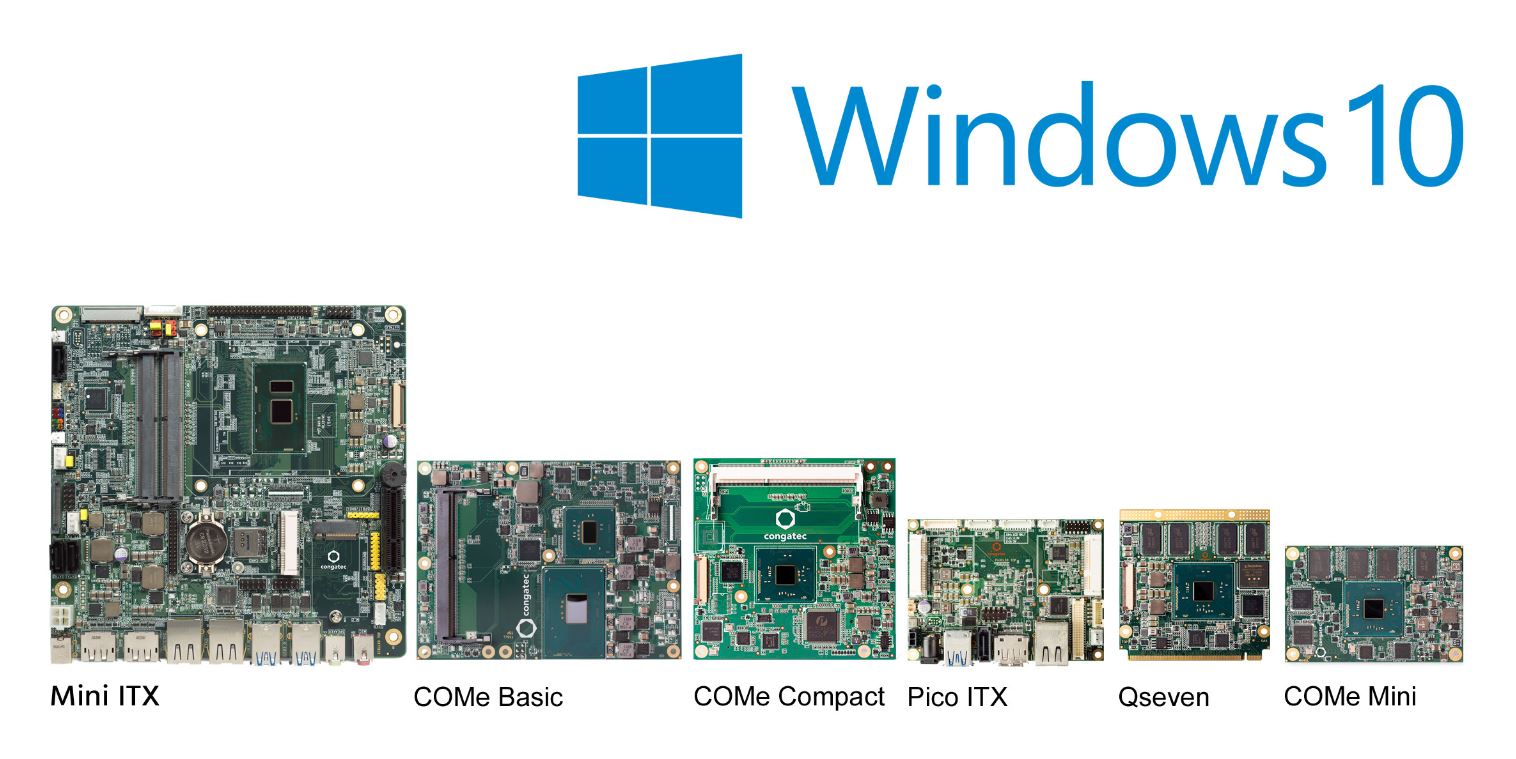Introduction
Welcome to the world of IoT, where everyday objects are becoming increasingly interconnected through the power of the internet. The Internet of Things (IoT) has gained significant momentum in recent years, revolutionizing the way we live, work, and interact with technology. From smart homes and connected cities to industrial automation and wearable devices, the applications of IoT are diverse and far-reaching.
IoT refers to the network of devices, sensors, and software that can collect and exchange data over the internet. By enabling communication between physical objects and the digital world, IoT has opened up endless possibilities for businesses and individuals alike. This article will explore the advantages of IoT and how it is transforming various industries.
As we dive into the advantages of IoT, it is important to note that this technology is not without its challenges. Privacy concerns, cybersecurity risks, and data management issues are some of the key considerations that need to be addressed as IoT continues to evolve. However, despite these challenges, the benefits of IoT are undeniable.
So, without further ado, let’s delve into the advantages that IoT brings to the table, and how it is reshaping our world for the better. From enhanced efficiency and cost savings to improved safety and customer experience, the advantages of IoT are vast and impactful.
Improved Efficiency and Productivity
One of the key advantages of IoT is its ability to enhance efficiency and productivity across various industries. By connecting devices and leveraging real-time data, IoT enables automation and seamless communication, leading to streamlined processes and optimized workflows.
In manufacturing, IoT plays a crucial role in transforming traditional factories into smart factories. Connected sensors and devices gather data on machine performance, production rates, and maintenance needs. This allows for proactive maintenance, minimizing downtime and maximizing productivity. Furthermore, IoT enables real-time monitoring of inventory levels, ensuring timely replenishment and preventing stockouts or overstock situations.
In the transportation and logistics sector, IoT enables fleet management systems that track vehicles, monitor fuel consumption, and optimize routes in real-time. This leads to reduced fuel costs, improved delivery times, and increased customer satisfaction. IoT also enables the integration of warehouse and inventory management systems, automating processes such as stock replenishment and order fulfillment, resulting in faster and more accurate operations.
In the healthcare industry, IoT is revolutionizing patient care by enabling remote monitoring and telemedicine. Wearable devices and sensors collect vital signs and health data, which can be transmitted to healthcare professionals in real-time. This not only allows for early detection of health issues but also reduces the need for frequent hospital visits, ultimately improving patient outcomes and reducing healthcare costs.
IoT also empowers employees by providing them with real-time information and insights. For example, in retail, IoT can help store associates quickly locate products, manage inventory, and assist customers more effectively. In office environments, IoT-enabled smart lighting and climate control systems can be tailored to individual preferences, improving employee comfort and productivity.
Overall, IoT paves the way for improved efficiency and productivity by automating processes, optimizing workflows, and providing real-time data and insights. By harnessing the power of IoT, businesses can unlock new levels of operational effectiveness and empower their workforce to achieve more.
Cost Savings
IoT offers significant potential for cost savings across various industries. By leveraging data-driven insights and automation, organizations can optimize resource allocation, reduce waste, and streamline operations.
In manufacturing, IoT enables predictive maintenance, which helps organizations avoid costly unplanned equipment downtime. By monitoring the performance of machinery in real-time and identifying potential issues before they escalate, companies can schedule maintenance activities at the most opportune times, minimizing disruption to production schedules and reducing maintenance costs.
IoT also helps optimize energy consumption and reduce utility costs. Smart buildings equipped with IoT sensors can adjust lighting and heating based on occupancy and weather conditions, ensuring optimal energy usage. In addition, IoT-enabled asset tracking systems can prevent loss or theft of valuable equipment, leading to savings on replacement costs.
IoT plays a crucial role in supply chain management, contributing to significant cost savings. By providing real-time visibility into the movement of goods and optimizing transportation routes, IoT helps reduce fuel consumption and transportation costs. Inventory management is also improved, preventing overstocking or stockouts, reducing carrying costs and increasing efficiency in warehouse operations.
In the healthcare industry, IoT helps reduce costs by enabling remote patient monitoring and telemedicine. Patients can receive care from the comfort of their homes, reducing the need for costly hospital stays. Healthcare providers can also leverage IoT to remotely monitor and adjust treatment plans, leading to more efficient healthcare delivery and reducing overall healthcare costs.
Retailers can benefit from IoT by implementing smart inventory management systems. By tracking inventory levels in real-time and integrating with sales data, organizations can prevent overstocking or understocking, minimizing lost sales and markdown costs. IoT also enables dynamic pricing strategies, allowing retailers to optimize pricing decisions and increase profitability.
Overall, IoT empowers organizations to make data-driven decisions that result in significant cost savings. By optimizing processes, improving resource allocation, and reducing waste, businesses can achieve greater efficiency and financial sustainability.
Enhanced Safety and Security
IoT plays a vital role in enhancing safety and security across various domains. By connecting devices and enabling real-time monitoring, organizations can proactively identify and address potential risks, ensuring the well-being of people and assets.
In the transportation industry, IoT enables smart traffic management systems that monitor traffic patterns, accidents, and weather conditions. This real-time data is used to optimize traffic flow, improve road safety, and reduce the likelihood of accidents. IoT can also be employed in vehicles to provide driver assistance systems, such as collision avoidance and lane departure warnings, keeping drivers and passengers safe on the road.
In industrial settings, IoT ensures the safety of workers by monitoring environmental conditions and equipment performance. For example, IoT sensors can detect the presence of hazardous gases in a factory, triggering alarms or automatically shutting down operations to prevent accidents. IoT also enables the monitoring of equipment conditions, such as temperature, pressure, and vibration, allowing for timely maintenance and reducing the risk of equipment failure or malfunctions.
IoT is instrumental in enhancing home security. Smart home devices, such as cameras, motion sensors, and smart locks, can be interconnected to provide comprehensive security solutions. Homeowners can monitor their properties remotely, receive alerts for suspicious activities, and control access to their homes, improving the overall safety and peace of mind.
In the healthcare sector, IoT enhances patient safety and care. IoT-enabled medical devices and wearables can monitor vital signs and automatically alert healthcare professionals in case of emergencies. This real-time monitoring allows for timely interventions, reducing the risk of adverse health events and improving patient outcomes.
IoT also plays a crucial role in improving cybersecurity. As more devices become interconnected, ensuring the security of the IoT ecosystem becomes paramount. IoT devices can be vulnerable to cyberattacks, and organizations must implement robust security measures to protect against unauthorized access and data breaches. Encryption, authentication protocols, and regular security updates are some of the measures organizations can take to enhance the security of their IoT systems.
Overall, IoT empowers organizations to enhance safety and security by enabling real-time monitoring, proactive risk identification, and timely interventions. By leveraging the power of IoT, businesses and individuals can create safer environments and protect valuable assets.
Remote Monitoring and Control
One of the significant advantages of IoT is its ability to enable remote monitoring and control of devices and systems. Through the power of connectivity, organizations can remotely access and manage various operations, enhancing efficiency and convenience.
In the energy sector, IoT plays a crucial role in remote monitoring and control of power generation and distribution systems. Operators can monitor energy usage, grid performance, and equipment health in real-time. This allows for proactive maintenance, rapid fault detection, and efficient energy management. IoT also enables the integration of renewable energy sources into the grid, optimizing energy production and reducing reliance on fossil fuels.
In agriculture, IoT enables farmers to remotely monitor and control irrigation systems, livestock conditions, and crop health. Sensors and connected devices gather real-time data on soil moisture, weather conditions, and plant health. This information helps farmers make data-driven decisions about irrigation, pest control, and crop management, resulting in improved productivity and resource efficiency.
Remote monitoring and control are also essential in the healthcare industry. IoT devices and wearables allow healthcare professionals to remotely monitor patients’ vital signs, track medication adherence, and receive alerts in case of emergencies. This enables early intervention, reduces hospital readmissions, and enhances overall patient care, particularly for individuals with chronic conditions or those who live in remote areas.
In the manufacturing sector, IoT enables remote monitoring and control of production systems. Organizations can track machine performance, assembly line efficiency, and quality control parameters from a centralized location. This allows for real-time adjustments, rapid issue identification, and efficient production management, regardless of geographical distances.
IoT also revolutionizes home automation by enabling remote control over various household devices. Smart homes equipped with IoT technology allow homeowners to control lights, appliances, security systems, and even heating and cooling systems from their smartphones or other devices. This level of remote control enhances convenience, energy efficiency, and security for homeowners.
Overall, IoT empowers organizations and individuals with the ability to remotely monitor and control devices and systems. This translates into improved operational efficiency, enhanced convenience, and optimized resource management, regardless of physical location.
Predictive Maintenance
Predictive maintenance is one of the significant advantages that IoT brings to various industries. By leveraging real-time data and advanced analytics, organizations can identify equipment issues before they lead to costly failures, enabling proactive maintenance and minimizing downtime.
Traditionally, maintenance activities are performed based on pre-determined schedules or when a failure occurs. This approach often results in unnecessary maintenance tasks or unexpected downtime, leading to increased costs and reduced productivity. With IoT, sensors and connected devices collect data on equipment performance, temperature, vibration, and other crucial parameters in real-time. This data is then analyzed using machine learning algorithms to detect any patterns or anomalies that may indicate potential failures.
IoT-enabled predictive maintenance can help organizations avoid costly unplanned downtime and schedule maintenance activities at the most optimal times. For example, in the manufacturing industry, IoT sensors can gather data on machine performance, helping identify patterns that may indicate imminent equipment failure. This allows maintenance teams to intervene before a failure occurs, saving time and money by addressing issues proactively.
In the transportation sector, IoT enables predictive maintenance for vehicles. Connected sensors monitor engine performance, tire pressure, fuel consumption, and other critical parameters. By analyzing this data, organizations can identify issues such as component wear or impending failures. This allows for timely repairs or replacements, reducing the risk of breakdowns and improving the overall reliability of the transportation fleet.
In the energy and utilities sector, IoT plays a crucial role in predictive maintenance of critical infrastructure. For example, in power generation plants, IoT sensors monitor the performance of turbines, generators, and other equipment. By detecting abnormal patterns or performance degradation, organizations can schedule maintenance activities during periods of low demand, minimizing the impact on power supply.
Predictive maintenance is also significant in the aviation industry, where safety and reliability are paramount. IoT-enabled sensors on aircraft gather real-time data on engine performance, structural integrity, and other vital parameters. By analyzing this data and identifying early signs of potential failures, proactive maintenance can be performed during scheduled downtime, reducing the risk of in-flight emergencies.
Overall, predictive maintenance enabled by IoT offers immense value to industries by maximizing asset performance, minimizing downtime, and optimizing maintenance activities. By leveraging real-time data and advanced analytics, organizations can transition from reactive maintenance to a proactive approach, resulting in improved operational efficiency and cost savings.
Data Collection and Analysis
Data collection and analysis are fundamental components of IoT, enabling organizations to gather valuable insights and make informed decisions. IoT facilitates the seamless collection of data from various sources, including sensors, devices, and user interactions, and enables advanced analytics to derive meaningful insights from that data.
In industries such as manufacturing and logistics, IoT allows for real-time collection of data on production rates, inventory levels, and supply chain performance. This data can be analyzed to identify bottlenecks, optimize workflows, and improve operational efficiency. For example, IoT sensors can provide visibility into the movement of goods within a warehouse, helping organizations optimize inventory management and reduce storage costs.
In the retail industry, IoT enables the collection and analysis of data on customer behavior, preferences, and purchase history. This data can be used to personalize marketing campaigns, optimize product placement, and improve the overall customer experience. For instance, IoT-enabled beacons can track customer movement within a store, allowing retailers to send targeted promotions or recommendations directly to their smartphones.
IoT also plays a significant role in optimizing energy consumption and sustainability. Smart meters and sensors can collect data on energy usage patterns, enabling organizations to identify areas of high consumption and implement energy-saving measures. By analyzing this data, businesses can make informed decisions on energy efficiency initiatives, reduce carbon emissions, and lower utility costs.
Healthcare organizations leverage IoT to collect patient health data, monitor treatment outcomes, and identify trends or anomalies. This information helps healthcare professionals make data-driven decisions, personalize treatment plans, and improve patient outcomes. IoT-enabled wearables and medical devices gather real-time data on vital signs, medication adherence, and activity levels, enabling remote monitoring and proactive interventions.
Furthermore, data collected from IoT devices can be combined with other sources, such as social media, weather forecasts, or market trends, to gain a comprehensive understanding of a situation or phenomenon. This holistic view allows organizations to identify patterns, predict trends, and make more accurate forecasts. For example, in agriculture, combining IoT data on soil conditions with weather forecasts can help farmers optimize irrigation schedules and improve crop yields.
As data collection and analysis continue to evolve, organizations must prioritize data privacy and security. Strong data governance practices, encryption, and secure data storage are essential to protect sensitive information and maintain customer trust.
Overall, IoT enables the seamless collection and analysis of data from various sources, empowering organizations to gain valuable insights and make data-driven decisions. By leveraging the power of IoT analytics, businesses can optimize operations, enhance customer experiences, and drive innovation.
Streamlined Decision-making
Streamlined decision-making is a key advantage that IoT brings to organizations across industries. By providing real-time data and insights, IoT enables faster and more informed decision-making processes, leading to improved operational efficiency and better outcomes.
In manufacturing, IoT facilitates data-driven decision-making at every stage of the production process. Real-time monitoring of machines, inventory levels, and production rates allows for timely adjustments and optimizations. For example, IoT sensors can detect deviations in quality control parameters, triggering immediate interventions to prevent the production of defective products. This enables organizations to make proactive decisions that lead to improved product quality and reduced waste.
In the retail sector, IoT data and analytics help organizations optimize inventory management and merchandising strategies. By analyzing data on customer behavior, preferences, and buying patterns, organizations can make data-driven decisions on product assortment, pricing, and promotional strategies. This leads to more targeted marketing efforts, increased sales, and improved customer satisfaction.
IoT also empowers organizations to make data-driven decisions in the energy sector. Real-time data on energy consumption, weather patterns, and energy prices allow organizations to optimize energy usage, identify areas of inefficiency, and implement energy-saving measures. This leads to cost savings, reduced environmental impact, and improved sustainability.
In healthcare, IoT enables healthcare professionals to make timely and accurate decisions based on real-time patient data. Remote monitoring of vital signs, medication adherence, and treatment effectiveness allows for early detection of health issues and personalized interventions. Healthcare providers can make informed decisions on treatment plans, follow-up appointments, and medication adjustments, leading to improved patient outcomes.
IoT plays a significant role in smart cities, enabling streamlined decision-making in urban development and infrastructure management. Real-time data on traffic patterns, air quality, waste management, and energy usage allows city authorities to make informed decisions on resource allocation, environmental policies, and public safety initiatives. This leads to more sustainable and livable cities for residents.
Moreover, IoT data can be combined with artificial intelligence and machine learning algorithms to enhance decision-making further. The ability to analyze vast amounts of data and identify patterns or trends enables organizations to make predictive and prescriptive decisions. For example, predictive maintenance models based on IoT data can help organizations schedule maintenance activities before equipment failure occurs, minimizing downtime and optimizing maintenance resources.
Overall, IoT empowers organizations to make faster, data-driven decisions by providing real-time insights and analytics. By leveraging IoT data and advanced technologies, businesses can optimize processes, drive innovation, and stay agile in an ever-changing market.
Improved Customer Experience
The Internet of Things (IoT) has revolutionized the way businesses interact with their customers, leading to improved customer experiences across various industries. By leveraging IoT technology, organizations can personalize interactions, enhance product offerings, and provide seamless and convenient experiences for their customers.
In the retail sector, IoT enables a more personalized shopping experience. By collecting data on customer preferences, purchase history, and in-store behavior, organizations can tailor product recommendations, discounts, and promotions to individual customers. For example, IoT-enabled beacons can send personalized offers to customers’ smartphones when they are near specific products or sections, enhancing engagement and increasing the likelihood of a purchase.
IoT also enhances convenience for customers in various ways. For example, smart home devices connected to IoT technology enable customers to control lighting, heating and cooling systems, and appliances with their smartphones or voice assistants. This level of automation and connectivity improves comfort and convenience, enhancing the overall customer experience.
In the hospitality industry, IoT enables a seamless and personalized experience for guests. Hotels can utilize IoT technology to create smart rooms that adjust lighting, temperature, and entertainment preferences based on individual guest profiles. IoT also enables keyless entry systems, allowing guests to use their smartphones as room keys, eliminating the need for physical key cards and enhancing convenience.
IoT plays a significant role in healthcare, where patient experiences can be improved through remote monitoring and telemedicine. IoT-enabled wearables and medical devices collect real-time data on patients’ vital signs and health conditions. Healthcare professionals can remotely monitor this data, provide timely feedback, and adjust treatment plans accordingly. This not only improves patient outcomes but also reduces the need for frequent hospital visits, enhancing convenience and comfort for patients.
In the transportation industry, IoT enhances the customer experience through real-time information and personalized services. IoT enables connected vehicles that can provide regular updates on traffic conditions, weather forecasts, and points of interest. This information allows for more efficient route planning and timely alerts about potential delays or alternative options, improving the overall travel experience.
IoT also enables organizations to proactively address customer issues and concerns. Connected devices can collect data on product performance, usage patterns, and potential malfunctions. This enables organizations to identify and resolve issues before customers are even aware of them, leading to higher customer satisfaction and loyalty.
Overall, IoT empowers businesses to understand and cater to their customers’ needs in a personalized and convenient manner. By leveraging IoT technology, organizations can provide seamless experiences, enhance product offerings, and build stronger relationships with their customers, ultimately leading to increased customer satisfaction and loyalty.
Conclusion
The Internet of Things (IoT) has emerged as a game-changing technology, revolutionizing industries and transforming the way we live and work. With its ability to connect devices, collect data, and enable seamless communication, IoT offers a multitude of advantages that have a profound impact on businesses and individuals alike.
From improved efficiency and productivity to cost savings and enhanced safety, IoT empowers organizations to optimize operations, streamline processes, and make data-driven decisions. By leveraging real-time data and analytics, businesses can gain valuable insights that contribute to better resource management, reduced downtime, and increased profitability.
IoT also enriches the customer experience by enabling personalization, convenience, and seamless interactions. Organizations can tailor products, services, and experiences to individual customer preferences, enhancing engagement and building stronger relationships. Through the power of IoT, businesses can create smarter and more connected environments that cater to the evolving needs and expectations of customers.
Furthermore, IoT brings a new level of intelligence and automation to various industries. Predictive maintenance, remote monitoring, and control enable organizations to proactively address issues, optimize resource allocation, and enhance operational efficiency. By leveraging IoT technology, businesses can stay ahead of the curve and adapt to the rapidly changing business landscape.
However, it is crucial to address the challenges and considerations that come with IoT implementation. Data privacy, cybersecurity, and data management are key areas that organizations must prioritize to ensure the trust and security of IoT systems. Strong data governance practices, encryption, and regular security updates are essential to protect sensitive information and maintain customer confidence.
In conclusion, the advantages of IoT are vast and impactful. Through improved efficiency, cost savings, enhanced safety, remote monitoring, and streamlined decision-making, IoT empowers organizations to thrive in a digital age. By harnessing the power of IoT, businesses can unlock new opportunities, drive innovation, and create a better future for all.







